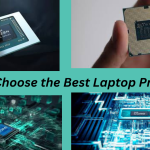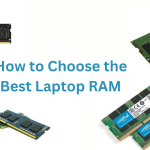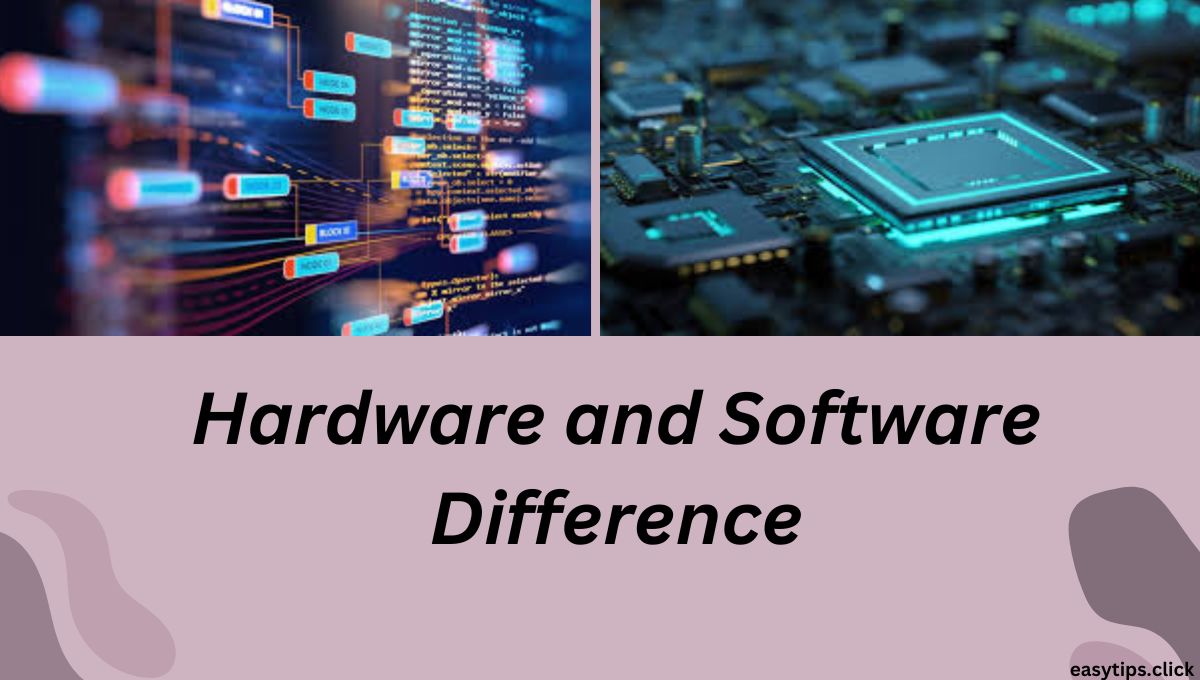Hardware and Software Difference:Hardware and Software are two fundamental components of a computer system, each playing crucial role in the functioning and utility of the system. While they work together to perform various tasks, they have distinct characteristics and functions. Understanding the difference between hardware and software is essential for anyone using or managing computer system.
Hardware
Hardware refers to the physical components of a computer system that you can touch and see. These components make up the tangible part of the computer and include everything from the central processing unit (CPU) to peripheral devices.
Key Components of Hardware
1. Central Processing Unit (CPU):
- Often referred to as the brain of the computer, the CPU executes instructions and processes data. It performs arithmetic , logic , control and input/output (I/O) operations specified by the instructions in a program.
2. Memory:
- RAM (Random Access Memory): Temporary storage that the CPU uses to store and access data quickly while performing tasks. It is volatile memory, meaning it loses its data when the computer is turned off.
- ROM (Read Only Memory) : permanent memory that contains essential instructions for the computers initial boot-up process. Unlike RAM, It retains data even when the computer is turned off.
3. Storage Devices:
- Hard Disk Drives (HDDs) : Use spinning disks to read and write data. They offer large storage capacities at a lower cost but are slower compared to SSDs.
- Solid State Drives (SSDs) : Use flash memory to store data, providing faster data access speeds and improved reliability compared to HDDs.
4. Motherboard:
- The main circuit board that connects all components of the computer, including the CPU, memory, storage devices and peripherals. It allows communication between hardware components.
5. Input Devices:
- Devices such as keyboards , mice and scanners that allows users to input data into the computer.
6. Output Devices:
- Devices like monitors, printers and speakers that present data to the users.
7. Power Supply Unit (PSU):
- Converts electrical power from an outlet into usable power for the internal components of the computer.
8. Peripheral Devices:
- External devices that can be connected to the computer system to enhance it’s functionality , such as USB drives, external hard drives, and networking devices.
Software
Software refers to the intangible components of a computer system. It comprises the instructions, programs, and data that tell the hardware how to perform specific tasks. Software is developed using programing languages and serves as the interface between the users and the hardware.
Interaction Between Hardware and Software
The interaction between hardware and software is essential for the computer system to function. The operating system acts as an intermediary, translating user commands into instructions that the hardware ca execute . device drivers enable communications between the operating system and hardware components, ensuring that peripherals function correctly. application software relies on the operating system and hardware to perform specific tasks and provide useful functionality to the user.
Conclusion
In summary, hardware and software are two distinct but interdependent components of a computer system. Hardware refers to the physical components that perform data processing and storage, while software consists of the instructions and programs that direct the hardware on how to perform tasks.







